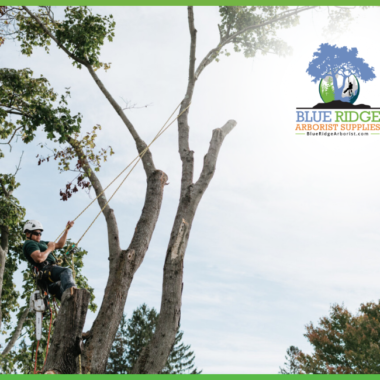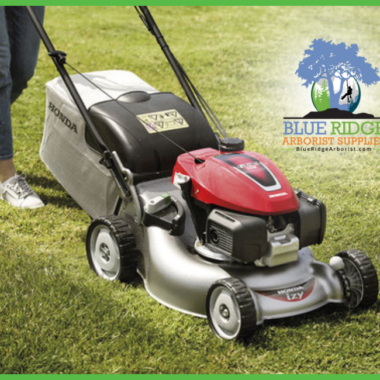This summer’s wildfire season was one of the worst on record for several areas in the west. The people who bravely fight these fires must operate with safety top of mind in such dangerous environments, including the arborists in charge of vegetation management. Here’s an insight into how critical they are to mitigating forest fires and the fire-safety tools they may use in doing so.
It’s hard to go through a news cycle these days without hearing about the wildfires that have been ravaging the Northwest region of our country. The state of Oregon has suffered one of the worst fire seasons on record, with Colorado and Nevada following closely behind. My own state of California has suffered the worst fire seasons on the books each of the last three consecutive years. It has been a perfect storm, with ongoing drought, pervading insect infestation, diminished forest-management resources, grid-hazard oversights and, quite simply, hot, windy and low-humidity weather patterns.
The most recent fire in the region in which our organization is based, the North Valley, just north of Sacramento, is the Dixie Fire. It had already burned a half million acres of beautiful, public and private state forest at the time this article was written in mid-August. It was already the single-largest fire in California’s history and was still less than 30% contained.
The Dixie Fire alone has negatively impacted air quality in the area and for the entire nation, and has caused a tremendous loss to the California ecosystem. At least a dozen other major fires also were burning in the region, affecting a combined equal, if not greater, amount of acreage as the Dixie Fire. State forest, private property and some agriculture have been lost to these wildfires.
California and surrounding states are without a doubt facing enormous challenges with the whole forest-management situation, unpredictable weather patterns and the ongoing threat of wildfires posed by a combination of these factors. California Governor Gavin Newsom was meeting with the Biden administration the first week of August to address some of these issues, including allocation at the federal level of additional fire-suppression resources. There are 7,400 boots already on the ground battling the wildfires, and more are needed in the midst of the current fire season.
Hazard-tree removal and vegetation management
 State authorities, municipalities and utility companies have implemented vegetation-management programs to manage arboriculture requirements and resources in their jurisdictions, with the aim of reducing ground fuels for these fires and removing trees hazardous to power-distribution lines and dead, dying or decaying trees, all of which contribute to fires.
State authorities, municipalities and utility companies have implemented vegetation-management programs to manage arboriculture requirements and resources in their jurisdictions, with the aim of reducing ground fuels for these fires and removing trees hazardous to power-distribution lines and dead, dying or decaying trees, all of which contribute to fires.
Hazard-tree removal and ground-fuel vegetation management are by far the best preventative measures to be taken by public authorities and the private sector to help prevent wildfires. Even private homeowners can implement their own safe spaces around their homes and structures, minimizing the amount of fuel on the ground and eliminating hazardous trees prior to the arrival of these seasonal fire threats, when conditions become ripe for blazing infernos.
Fire-safety tools
The first fire-mitigation strategy for arborist crews performing work in fire-prone areas during fire season is the inclusion of a fire-prevention plan in the organization’s existing safety manual. Public authorities require such plans to be part of an organization’s safety policy. Check with your local authorities to make sure you know what particular fire-safety requirements apply to your local area.
Having the proper fire-safety tools at the ready and performing basic fire-safety training for your crews are the most essential parts of any fire-prevention plan. These preparations might include:
- Making sure you have on hand enough fully charged and properly inspected and tagged fire extinguishers to furnish each vehicle and crew. A multipurpose ABC-type, 4- or 5-pound fire extinguisher is recommended in most cases, as this type of extinguisher will work to extinguish fire involving any type of fuel, including wood, fuel mix, hydraulic or electrical.
- Having at least one backpack-type, firefighting water pump with nozzle for each crew. These pumps are manually operated and typically hold five gallons of water, and include a couple of nozzles for a narrow stream or a fan of water to spray on a small fire.
- Fire-line cutting tools. When dealing with brush fires specifically, these are by far the most important tools, more so even than water pumps or fire extinguishers. Fire-line cutting tools are the most effective use of energy and resources for cutting away additional fuel sources and creating a fire line. Typically, these tools consist of at least one spade-type or round shovel per crew member and at least one McCleod tool, a sort of rake/hoe combination. The mattock pick, or pickaxe, is another commonly used firefighting fire-line-cutting tool.
- Chain saws. The chain saw is also considered a fire-cutting tool. It is an essential tool your crew already has on hand, though typically it is not required by fire-regulating authorities to have one as part of your arsenal when working in fire-prone areas in fire season.
- A designated fire box on all your crew vehicles in order to keep your fire tools centrally located. It keeps your tools from getting damaged or exposed to the elements and keeps them at the ready. While nice to have, a fire box typically is not required by regulating authorities. An important point to consider is that, when you keep all your fire gear in a fire box, vehicle-access limitations to a work site commonly become an issue. The closest distance you can sometimes park your crew vehicle exceeds the typical 25-foot proximity requirement for fire-safety tools to a work zone. It is recommended to stage your fire tools off your crew vehicle and within a 25-foot radius of the crew work site, and then to restage the fire-safety tools as needed.
Lastly, check with your local fire authority and become acquainted with your local fire-prevention officer, if applicable. Set up a time for a walkthrough of your operations and an inspection of your fire-safety tools for proper compliance, for a review of your fire-prevention plan and to acquire any other valuable information from your local authority to help your organization establish that relationship and stay a cut above those requirements.
If you need to add to your safety gear for your arborist work, Blue Ridge Arborist Supplies has all of the tools and PPE you require. Call us today and let us help you with what you need! 540.212.7862 or find us on Facebook.
Reference: [https://tcimag.tcia.org/tree-care/wildfire-update-fire-safety-gear-for-arborist-work/]










